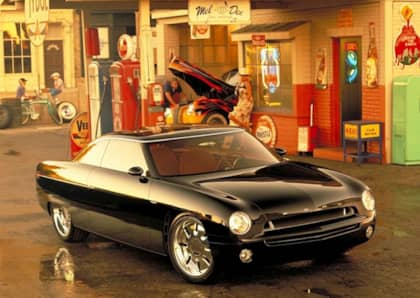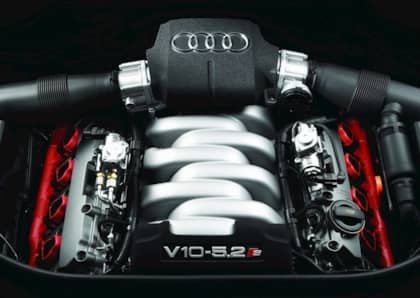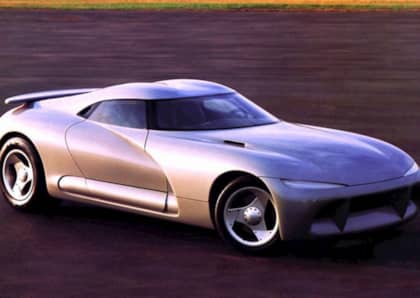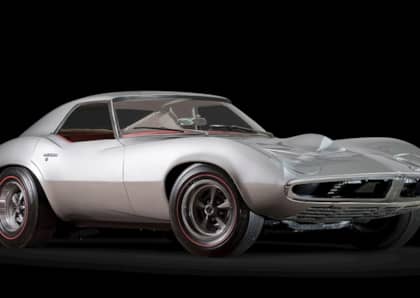Why These 5 Concept Cars Made It To The Street Almost Unchanged
It's an old joke in the auto industry that the more extravagant a concept appears, the less likely it is to actually make it into the hands of buyers as a street car. There are a number of exceptions to this rule, however, that have proven time and again that creativity isn't dead in the halls of major corporations more often beholden to the dollar than to expanding the language of modern design.
Which cars made it to the street almost unchanged from their initial concepts? We pick out five of our favorites and explain the thinking that kept them from wasting their amazing potential.
1. Dodge Viper
The Concept: At the 1989 Detroit auto show Dodge wowed crowds with a modern take on the original Shelby Cobra called the Viper concept. This sidepipe-equipped roadster was so sleek it didn't even have exterior door handles, but it did pack a 10-cylinder engine under the hood that was a triumphant elephant blast that put rivals like the Porsche 911 and Chevrolet Corvette on notice.
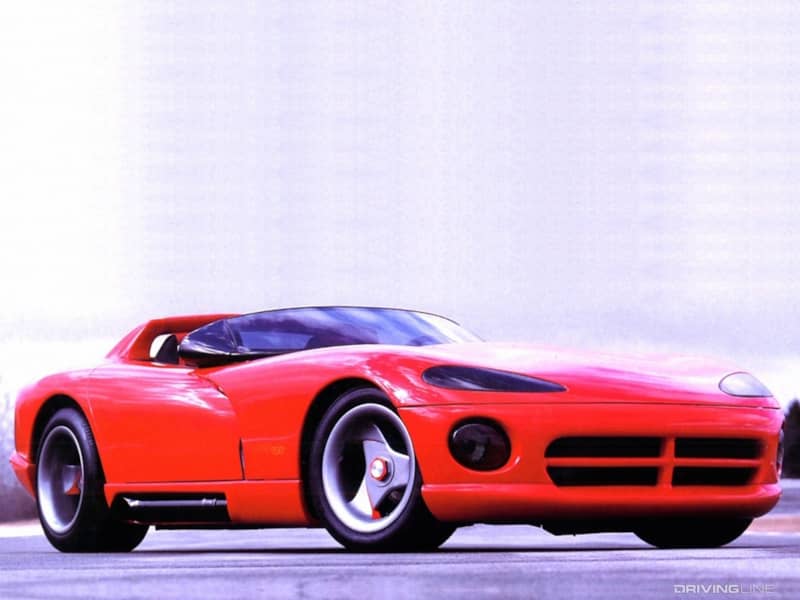
The Production Car: Three short years later the 1992 Dodge Viper hits showrooms, and it’s a dead ringer for the concept. There still aren't any door handles, nor is there side glass; buyers have to make do with floppy plastic snap-on side panels that hang down from the vehicle's removable vinyl roof panel. Even the sidepipes are still in the picture, somewhat more prominent than they were in concept form and ready to singe your leg as soon as you step out of the door.
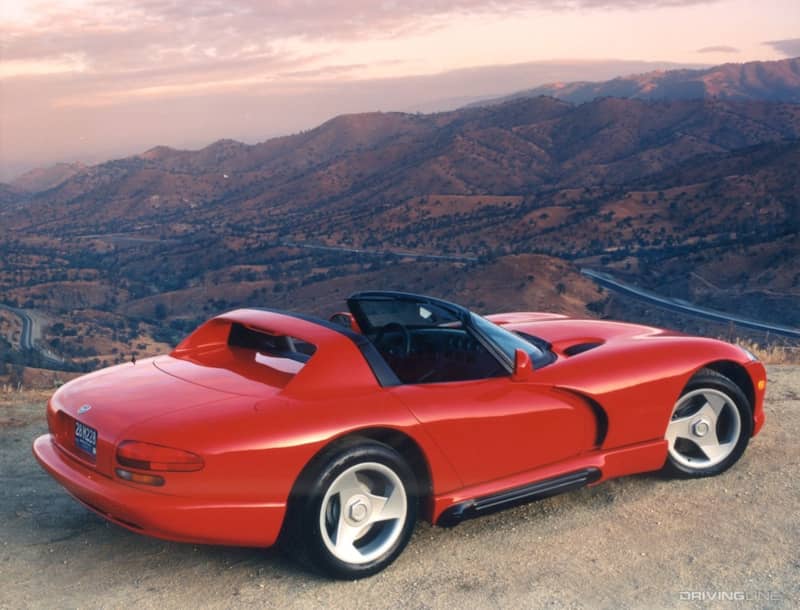
The biggest difference was found under the hood, where the somewhat crude concept V10 was replaced with an aluminum block unit modeled loosely on the Ram pickup's iron block 10-cylinder, with modest input from Lamborghini. The integrated windshield side mirrors are gone from the on-sale version, and the windshield rake is itself less pronounced, along with changes to the headlights and rear brakes that are impossible to see from the outside.
The Reason It Was Virtually Unchanged: Tom Gale, Chrysler's chief designer, was adamant that each concept car fully embody the character of the brand it represented. For this reason, the Viper required no major styling changes in order to fit with the brutish personality Dodge was hoping to portray with its king snake sportster. At the same time, the entire project was placed under strict budget and timeline restrictions, which meant any deviation from the concept was simply impossible from a cash flow standpoint. The car would be completed three months ahead of schedule.
2. Porsche Boxster
The Concept: The 1993 Porsche Boxster concept was intended to do two things: pay homage to the classic 550 Spyder of 40 years previous, and move the brand's trademark flat six engine to the center of the platform. With a true mid-engine setup, the Boxster would offer an ultra-balanced take on sports car handling at a price point significantly lower than that the 911, while also contributing to the look of the upcoming 996 generation of its sibling.
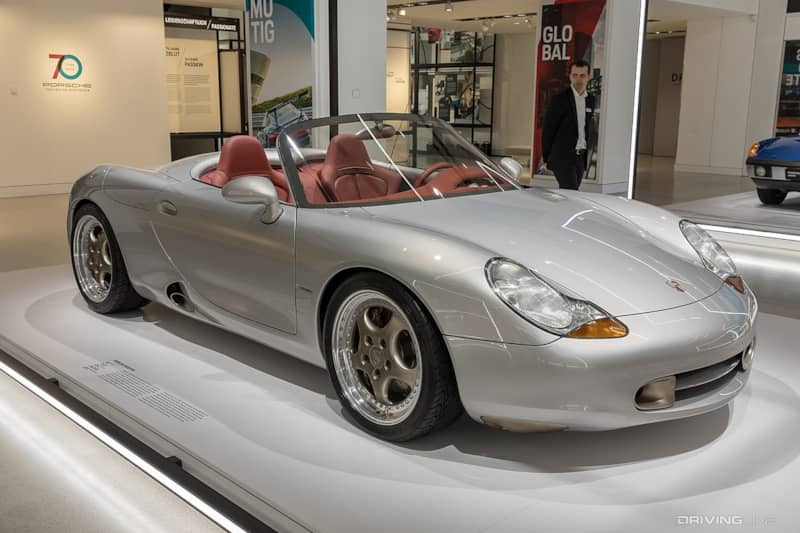
The Production Car: Keen eyes will notice that the production Boxster, which appeared four years after the show car, is actually nine inches longer and somewhat taller than the concept. The decision to make the 911 and the 986 (the Boxster's numerical designation) as similar as possible from the A-pillar forward shifted a few other details of the production model, but these differences are subtle and in keeping with the spirit of the original.
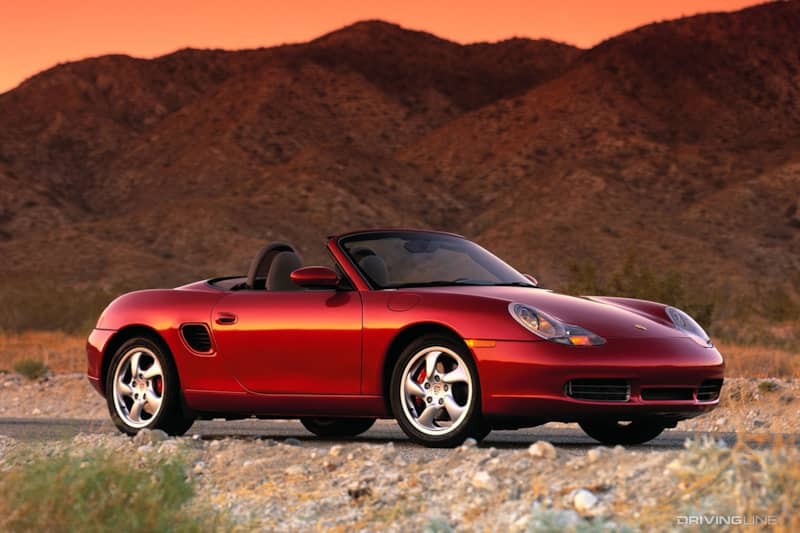
The Reason It Was Virtually Unchanged: After catching flack for the 924 and 914 sharing too many details with corporate partners VW and Audi, Porsche needed its entry-level model to be a completely in-house project. That meant no raiding the external parts bin, which in turn gave designers and stylists more freedom to keep the production Boxster the same shape as the concept. Add in the restrictions imposed by the historic shape of the 550 it was inspired by, and the phenomenal reaction to the car when it first debuted, and Porsche had no reason to mess with what appeared to be a surefire success.
3. Plymouth Prowler
The Concept: Built in the same era as the Viper, the Plymouth Prowler concept reflected Tom Gale's strong affinity for the '32 Ford, which served as a template for thousands of classic hot rods as well as Chrysler's extroverted open-wheel interpretation. Also inspired by the Hemisfear project from Chip Foose's students at the Pasadena Art Center College of Design, there was nothing like the Prowler when it hit the show car circuit in 1993.
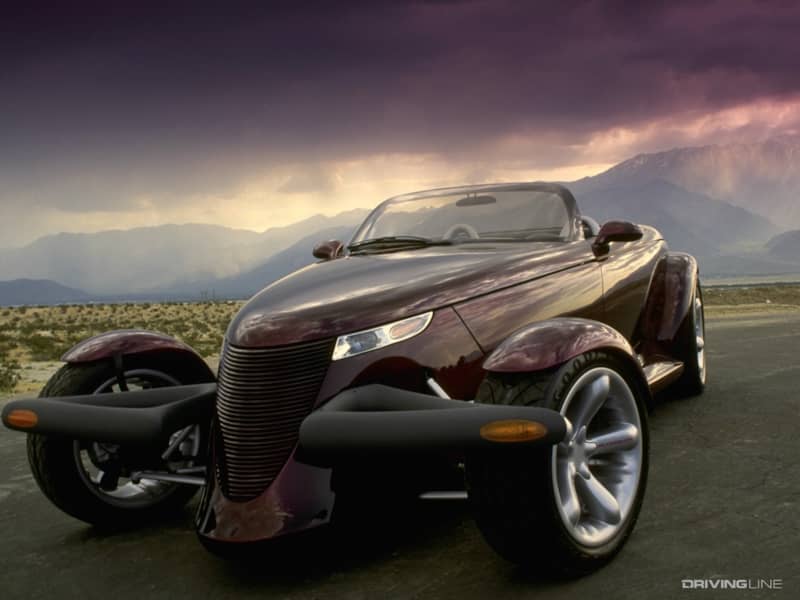
The Production Car: Unlike the Viper that preceded it, this time Chrysler made sure to include things like door handles and other must-have features that any car buyer would expect from a modern vehicle. Aside from that however, only the engine—a V6 borrowed from the brand's passenger sedan program—would different from what eager crowds had seen on the concept.
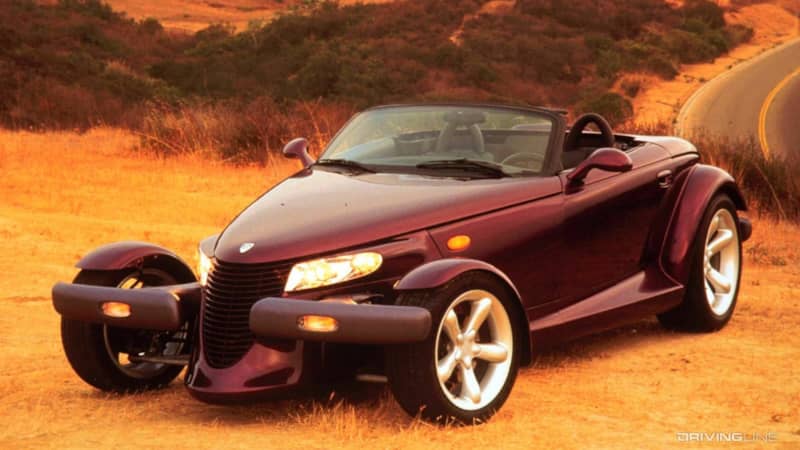
The Reason It Was Virtually Unchanged: Plymouth's designers were under strict orders that the concept had to incorporate as many existing components as possible. Free to match Hemisfear in terms of styling, they had to be equally creative to fit all of the Pentastar parts needed from other projects to bring the vehicle to life. As a result the transition from concept to street car was almost as simple as placing an order at the Mopar counter.
4. Audi TT
The Concept: Of all the vehicles on this list, the Audi TT is the only one completely unfettered by the ghost of styling past. With a clean slate ahead of them (the Prinz TT from the company's history was a name-check only), designers J Mays and Freeman Thomas were free to build a Bauhaus-look coupe the was unlike anything that Audi had built to that point. Dazzling the crowds at Frankfurt in 1995, and then at Tokyo later that year with a roadster version of the same, the TT and TTS concepts showed the brand that there was demand for a small sports car wearing the four rings.
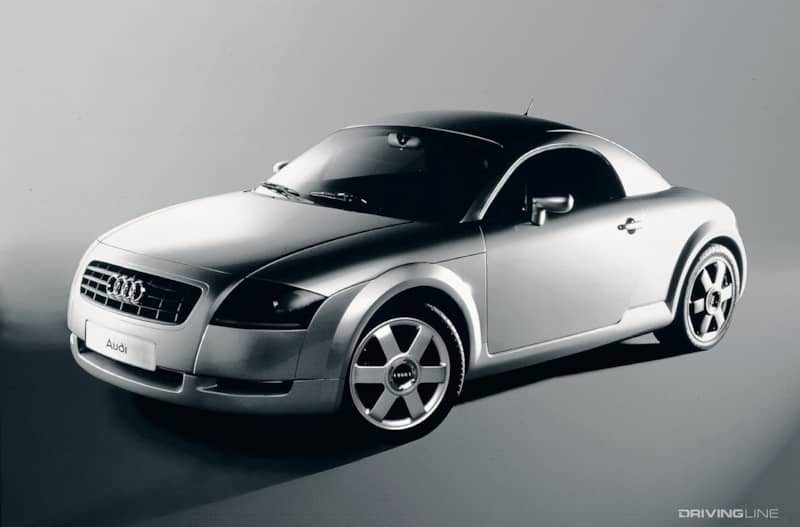
The Production Car: Rounder, and slightly less elongated at the roofline than the concept (with side windows added at the rear), the production model still retained the original's unique character when it rolled in to the 1998 Paris Motor Show. It was a familiar story for J Mays, who would see a similar transition from the Volkswagen Concept One to the New Beetle.
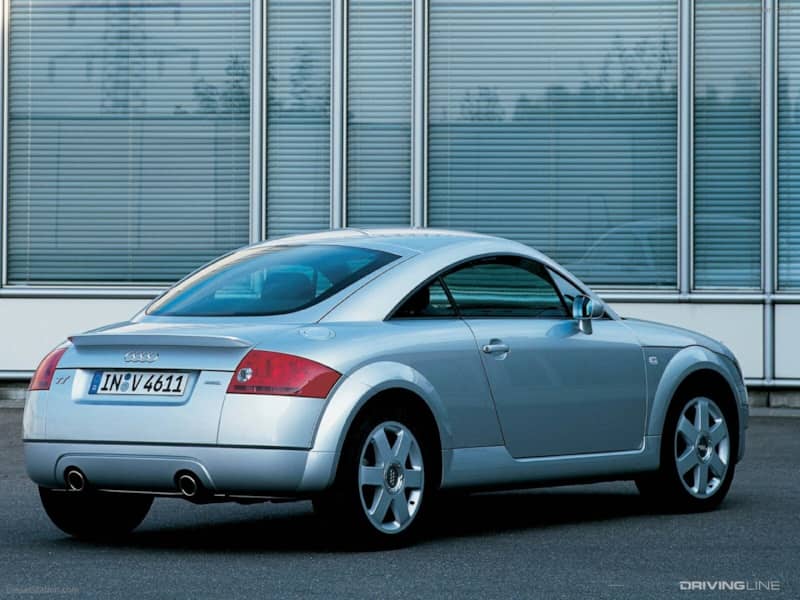
The Reason It Was Virtually Unchanged: Having initially chosen to use an existing platform to keep costs down, Mays and Thomas had unwittingly facilitated the birth of the TT concept into the TT road car. Thanks to its Volkswagen Golf chassis and drivetrains lifted from the Audi A4, it was possible to maintain the same shape as the concept car without making a major investment in the oily bits. This 'style-first' approach would also help demonstrate to Audi that modular platforms could keep costs down while still producing eye-catching, high-personality designs.
5. Dodge Challenger Concept
The Concept: In the absence of the Chevrolet Camaro the Ford Mustang was unchallenged among muscle cars in the mid-2000s. Mining its own styling history, the Dodge Challenger Concept appeared at the 2006 Detroit auto show as a retro-themed V8 bruiser that bore a strong resemblance to the original 1970 model.
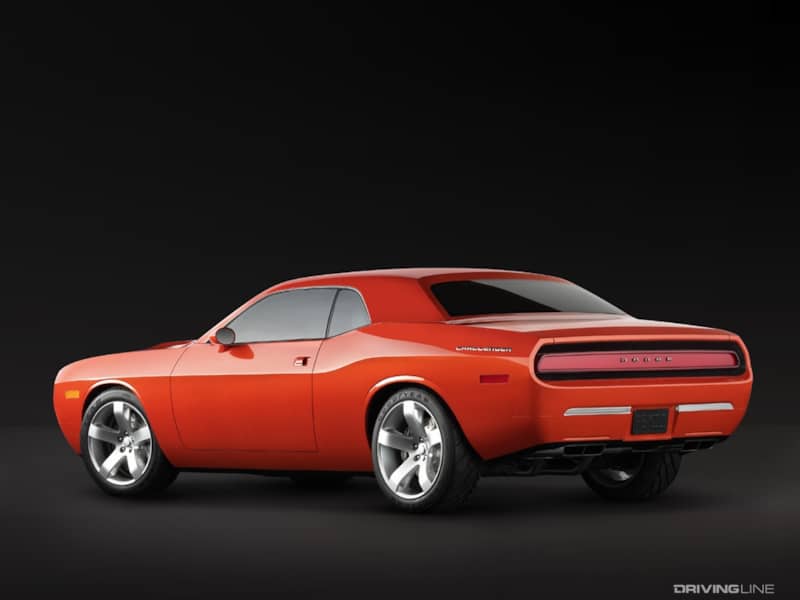
The Production Car: Built on the existing LX platform that underpinned the Dodge Charger and Chrysler 300, the Challenger Concept was able to translate directly from the spinning dais to the burnout box. Largely a sheet metal exercise with four inches of the sedan's wheelbase sliced out behind the front two seats, the Challenger was ready-made to accept any engine already offered in its Charger/300 cousins, and it would soon rival the Mustang's equally old school looks with modern V8 performance when it went on sale in 2008.
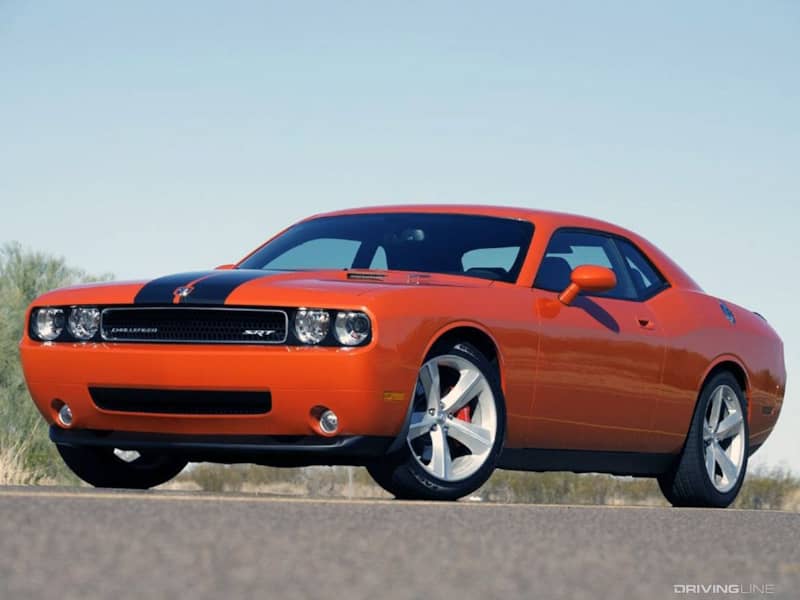
The Reason It Was Virtually Unchanged: Then, as now, Chrysler leaned heavily on the LX platform as a cost-saving measure when introducing new rear-wheel drive models. With only styling to change, it was inexpensive to add the Challenger to the mix of cars already riding on the LX chassis. Today's Challenger continues to keep the LX flag flying, albeit after a series of substantial updates to keep it competitive with newer muscle machines.
Concept cars don't always make it to market. Check out these 5 amazing concepts that were never built, and what we got instead.




